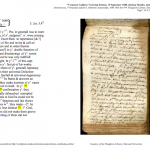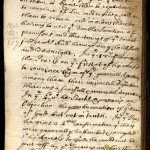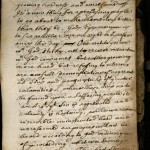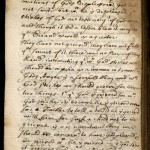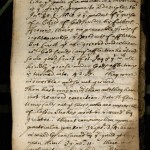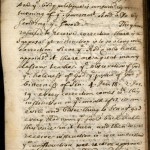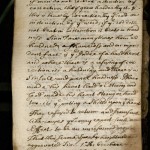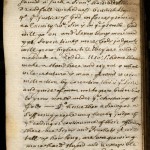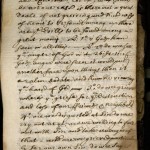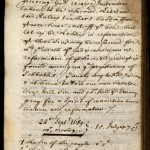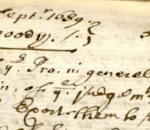 Description:
Description:
“Voracious Auditor,” Grieving Sermon, 9 pages.
Joshua Moodey (minister) on Jer 5:3-4
Source:
[Anonymous,“Voracious auditor”]. Sermons: manuscript, 1689. MS Am 974. Houghton Library, Harvard University.
Status:
Primary transcription complete. Needs review.
Click here to view side-by-side transcription:
Side-by-side transcription – Voracious Auditor, Grieving Sermon
Click thumbnails below for a closer look at individual pages:
This anonymous auditor uses an oblong notebook to record sermons. The amount of specific phrasing with irregularities of syntax and incompleteness suggests a primarily aural recorder who likely is taking notes in the meetinghouse. In my book, I nicknamed this auditor “Voracious” for his ability to capture a verbatim account of the words of the minister, Joshua Moodey. Even though Voracious falls short of a full verbatim record, the notes are highly suggestive of the possible cadence of delivery. Especially toward the end of the sermon, Voracious seems to capture the accelerating urgency of Moodey’s words. See Jeremiah’s Scribes pp 93-97 for my reading of this sermon.
I am still trying to decipher a few words in this sermon.( Notice the question marks in certain places where I am unsure or yellow highlighted areas where I refrain from guessing.) My larger question, however, has to do with the startling turn at the very end of the sermon when Moodey instructs his auditory to “Kill Sin” as they would “Kill Indians.” As I’ve noted before, the very real sense of violence here is not lessened because of the figurative analogy. More than a decade after King Philip’s War, this disturbing martial imagery remains. The figure of the native enemy has become a full trope. The final turn in this sermon is even more disconcerting, I think, because it follows such a sympathetic and heartfelt invocation to consider the grief (felt by God, not felt by the sinner) in intimate, familial terms.

